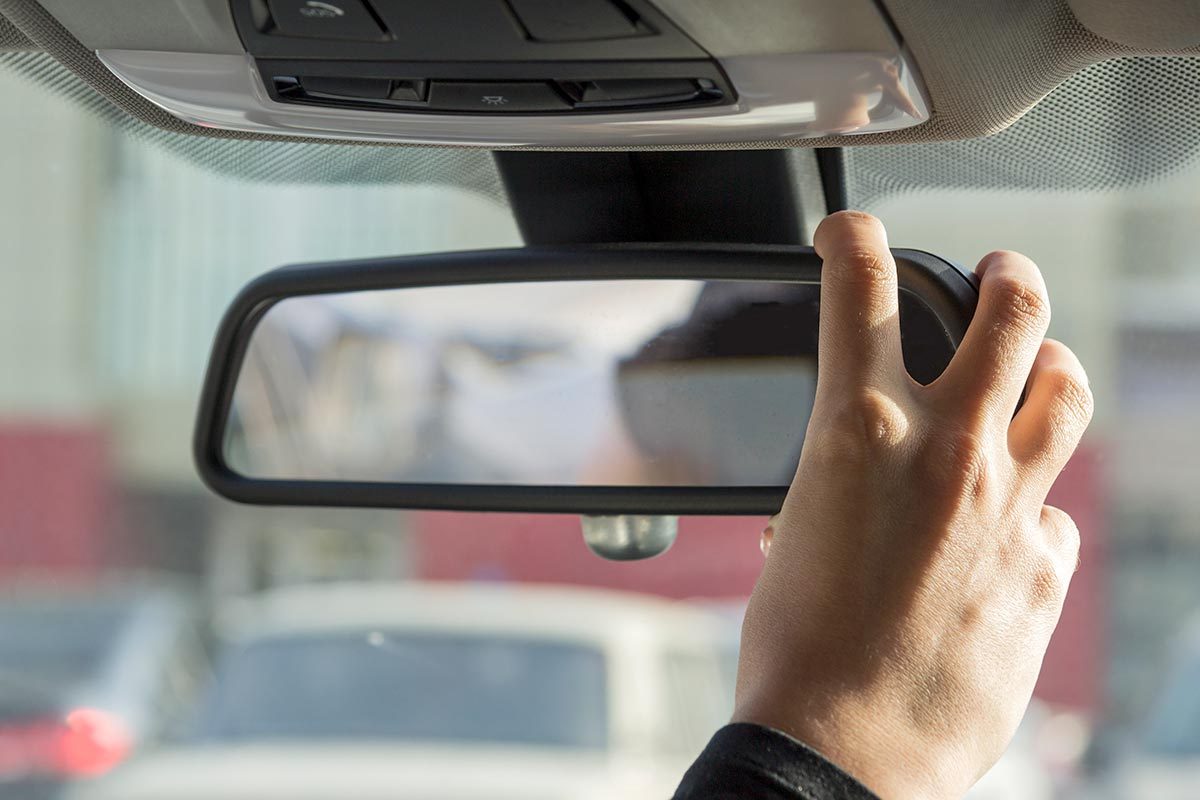What you learned in driver's ed might not be the full story Here's the proper way to keep yourself safe from blind spots while driving.

The Right Way to Adjust Your Car Mirrors to Eliminate Blind Spots

To safely reach the pedals, I need to drive with the seat in its forward-most position. My partner, however, being seven inches taller than me, is most comfortable with the seat as far back as it can go. That means every time one of us gets into the driver’s seat, that person needs to readjust the mirrors to avoid blinds spots.
“Blind spots are one of the most underestimated dangers on the road, and a major factor in lane-change and turning collisions,” says Lucas Waldenbäck, co-founder of Zutobi Drivers Ed.
Even though many new cars offer blind-spot sensors, it’s still vital to manually check your blind spots through mirrors and by looking over your shoulders. Here’s how to adjust your mirrors for blind spots, to keep yourself, your passengers and fellow drivers safe.
What Are Car Blind Spots?

Blind spots are the areas outside of your vehicle that you can’t see in your side or rearview mirrors.
“For many cars, they are usually found just behind, and to the left and right of the vehicle,” says Marin Cristian, CEO of Online Games. “These are the most common spots where another car can easily be invisible to you.”
Where are the blind spots while driving?
Most people are aware of one or two. There are actually eight key blind spots.
- Directly in front of the hood;
- At the left and right crossbars (aka A-pillars);
- Directly over your left and right shoulders;
- At the rear-left and rear-right pillars, and
- Directly behind the vehicle, especially low to the ground.
These blind zones exist because of structural obstructions like door pillars, the vehicle’s frame and your limited line of sight. “For instance, when backing up, you won’t see a small child or pole below the rear windshield, even if you’re using your rearview mirror,” says Waldenbäck.
How to Properly Adjust Your Side Mirrors
There are two recommended methods for adjusting your side mirrors.
- Setting A, the standard commonly taught in driving schools, is to adjust your mirrors so the tip of your door handle appears in the lower inner corner of the side mirror. “This gives a familiar visual reference for most drivers,” says Waldenbäck.
- Setting B, the way SAE international standards recommend, is to push the mirrors farther outward, until they barely overlap with the rearview mirror’s field of view. “This setting helps minimize blind spots and reduces the need to turn your head as far,” says Waldenbäck. “However, it may feel disorienting at first,” he says.
How to Properly Adjust Your Rearview Mirror
Tilt the mirror so that you can see as much of the rear window as possible without shifting your seating position. That should give you a complete view of the lane directly behind your vehicle and work in conjunction with your side mirrors to create almost continuous field of vision around your car.
How to Test If Your Mirrors Are Correctly Adjusted
Once you get on a multilane road, watch a car pass you. It should transition smoothly from your rearview to your side mirror, then from your side mirror to your peripheral vision.
“If the vehicle disappears from all mirrors before appearing beside you, that’s a clear indicator of a blind spot and that your mirrors may need fine-tuning,” says Waldenbäck.
FAQ
How often should I adjust my mirrors?
You should check and adjust your car’s rearview and side mirrors for blind spots:
- Whenever you adjust your seat;
- Before long drives or freeway trips;
- Every time someone else has driven your car.
“Even a slight change in your sitting position alters your field of vision,” says Waldenbäck.
Do I still need to adjust my mirrors if my car has blind spot sensors?
Absolutely, you should still adjust your mirrors even if it has blind spot sensors. Sensors are a supplement to mirrors, but not a replacement. “They may miss fast-approaching vehicles, motorcycles or fail altogether,” says Waldenbäck. “Good habits like mirror checks and shoulder glances are irreplaceable.”
About the Experts
- Lucas Waldenbäck is Co-Founder of Zutobi Drivers Ed, a driver’s education app that helps students become safe and confident drivers.
- Marin Cristian is CEO of Online Games, and has a background in creating simulations for cars and driving mechanics and studying fundamental principles of road safety.
RELATED:



















